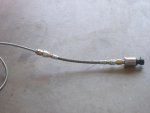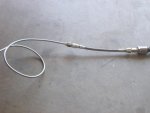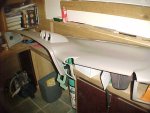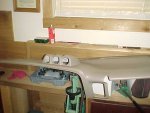I am not familiar with the types of gauges available. The hot side will get well over 500 degrees, so tubing has to be used carefully.
A magnehelic uses simple static pressure ports. If the is a gauge that can display the boost as compared to the inlet side (vs one that is vented to the atmopsphere) then the actual numbers would surprise. I believe that there is a 38-40 psi differential, for 30 psi of plenum boost, the other 8-10 psi going to plumbing losses. That is a design nightmare if you ask me. But then again, it somewhat explains the LLY (stock) performance handicap.
40 psi is a PR of (40+14)/14=3.86
If you look back at the compressor map on the other thread, that is freakish efficiency and overspeed. Translated, beaucoup heat.
Edit: clarifying, a boost gauge normally shows pressure compared to ambient. Get one that is a differntial, IOW the high pressure side is compared to the inlet pressure, as opposed to simply venting it to the atmopsphere.
A magnehelic uses simple static pressure ports. If the is a gauge that can display the boost as compared to the inlet side (vs one that is vented to the atmopsphere) then the actual numbers would surprise. I believe that there is a 38-40 psi differential, for 30 psi of plenum boost, the other 8-10 psi going to plumbing losses. That is a design nightmare if you ask me. But then again, it somewhat explains the LLY (stock) performance handicap.
40 psi is a PR of (40+14)/14=3.86
If you look back at the compressor map on the other thread, that is freakish efficiency and overspeed. Translated, beaucoup heat.
Edit: clarifying, a boost gauge normally shows pressure compared to ambient. Get one that is a differntial, IOW the high pressure side is compared to the inlet pressure, as opposed to simply venting it to the atmopsphere.
Last edited:







